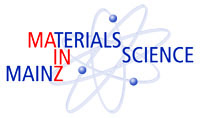


Physikalisches Kolloquium
June 16, 2015 at
4 p.m. c.t.
in
HS KPH
Prof. Dr. Friederike Schmid
Institut für Physik
friederike.schmid@uni-mainz.de
Prof. Dr. Hartmut Wittig
Institut für Kernphysik
hartmut.wittig@uni-mainz.de
New Effects of Dark Matter which are Linear in the Interaction Strength
Prof. Dr. Victor Flambaum (University New South Wales, Australia)
The boson dark matter particles produced after Big Bang may form a Bose condensate and/or topological defects. In contrast to traditional dark matter searches, effects produced by interaction of an ordinary matter with this condensate and defects may be first power in the underlying interaction strength, which is extremely small, rather than the second power or higher. We discuss new effects and schemes for the direct detection of dark matter, including axions, axion-like pseudoscalar particles (ALPs) and scalar particles, as well as topological defects. Specific effects produced by the particle condensates include: space-time variation of the fundamental constants (fine structure constant alpha, particle masses, etc) including both slow variation (on the cosmological scale) and fast oscillations, oscillating atomic electric dipole moments, precession of electron and nuclear spins about the direction of Earth’s motion through an axion/ALP condensate (the axion wind effect), axion-mediated spin-gravity couplings, and oscillating variations in phase shifts produced in laser/maser interferometers (such as LIGO, Virgo, GEO600 and TAMA300) by a scalar particle condensate. Topological defects (which may also be a part of dark matter) may produce changes in pulsar rotational frequencies (which may have been observed already in pulsar glitches), non-gravitational lensing of cosmic radiation and the time-delay of pulsar signals. Topological defects may also produce transient and correlated observable effects in a global network of atomic clocks, magnetometers (spin precession effects and transient electric dipole moments) and laser/maser interferometers, as well as alter the rate of Earth rotation. The proposed detection methods offer sensitive probes into important, unconstrained regions of dark matter parameter spaces.